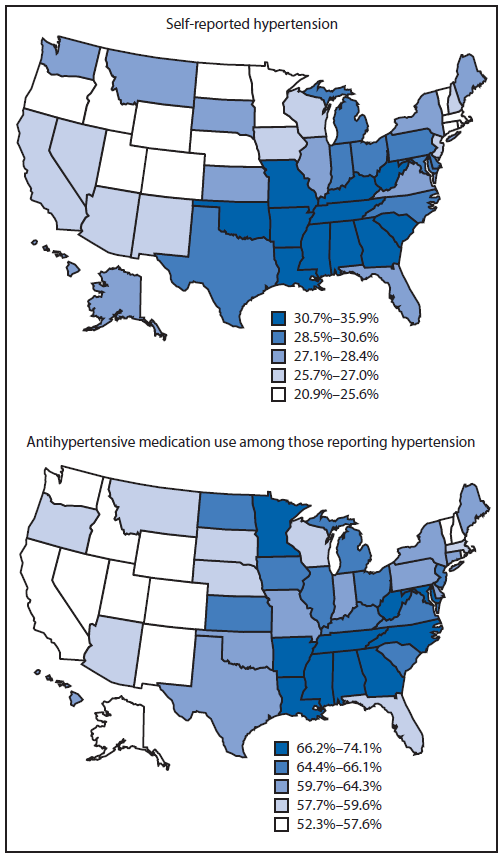 About one third of adults in the United States have high blood pressure, a major risk factor for heart disease and stroke. And although research has been done analyzing the differences in prevalence among racial/ethnic populations, less is known about variations between states.
About one third of adults in the United States have high blood pressure, a major risk factor for heart disease and stroke. And although research has been done analyzing the differences in prevalence among racial/ethnic populations, less is known about variations between states. About one third of adults in the United States have high blood pressure, a major risk factor for heart disease and stroke. And although research has been done analyzing the differences in prevalence among racial/ethnic populations, less is known about variations between states.
About one third of adults in the United States have high blood pressure, a major risk factor for heart disease and stroke. And although research has been done analyzing the differences in prevalence among racial/ethnic populations, less is known about variations between states.
Researchers at the CDC looked at data from the 2005-2009 Behavioral Risk Factor Surveillance System in order to assess between state variation. They found that self-reported hypertension rates ranged from about 21 percent in Minnesota to 36 percent in Mississippi. In general, southern states had higher self-reported hypertension rates. In terms of those using antihypertensive medications, numbers ranged from 52 percent in California to 74 percent in Tennessee.
There were some similarities between states. The majority of states had an increased prevalence of self-reported hypertension from 2005-2009, with an overall increase in the US from 25.8 percent to 28.3 percent, as well as a small increase in the use of hypertensive drugs.
Researchers believe that knowledge about state level trends can help in guiding programs to prevent heart disease, stroke, and other complications of uncontrolled hypertension, including those conducted by state and local public health agencies and health-care providers.
ACSH s Dr. Gilbert Ross notes, This research is extremely important because hypertension remains a major modifiable risk factor for cardiovascular disease, the leading cause of death in the United States. If programs can be developed to target the control of hypertension, we may see a major reduction in the number of deaths from heart disease.


